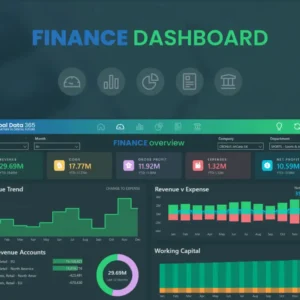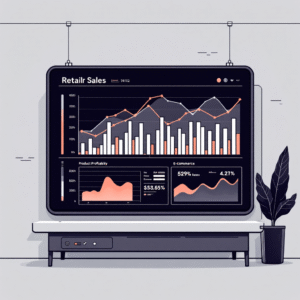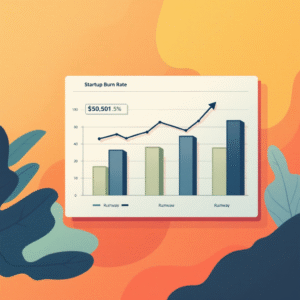Table of Contents
ToggleFinance departments are under constant pressure to deliver insights faster, more accurately, and at scale. Microsoft Power BI has become one of the most powerful business intelligence platforms for CFOs, FP&A teams, and financial controllers.
But choosing the right Power BI licensing model is critical. Should your finance team run on Pro licenses or invest in Premium capacity?
This guide breaks down the differences, cost implications, and real-world applications of Power BI Pro vs Premium specifically for finance departments.
Why Finance Departments Rely on Power BI
Financial reporting is no longer just about static P&L statements. Finance leaders demand:
-
Real-time dashboards with KPIs like working capital, margins, and variance analysis
-
Collaboration between FP&A, CFO, and business unit heads
-
Scalability for handling large ERP, CRM, and SaaS billing datasets
Power BI answers these needs with data modeling, visualization, and enterprise integration. However, the licensing model determines how far your finance team can push Power BI’s potential.
👉 Schedule a call today to discuss the best Power BI setup for your finance team.
📧 info@powerbigate.com | 📞 +1 281 631 3767 | Google Meet
Overview of Power BI Licensing Models
3.1 Power BI Free
-
Limited functionality (personal reports only)
-
No sharing or collaboration
-
Not suitable for finance teams
3.2 Power BI Pro
-
$10 per user/month (approximate)
-
Allows report creation, sharing, and collaboration
-
Supports up to 1 GB dataset size
-
Best for small finance teams
3.3 Power BI Premium
-
Capacity-based model (starts at $4,995/month per capacity)
-
Supports up to 400 GB dataset size
-
Advanced AI, paginated reports, and enterprise dataflows
-
Best for large finance teams managing massive datasets
Comparing Power BI Pro vs Premium for Finance Teams
4.1 Cost Structure
| License Type | Pricing | Best Fit |
|---|---|---|
| Pro | $10/user/month | Small & mid-sized finance teams |
| Premium Per User (PPU) | $20/user/month | Advanced finance use cases without full capacity |
| Premium Capacity | $4,995+/month | Enterprises with 100+ finance & business users |
4.2 Data Capacity & Performance
-
Pro: Limited to 1 GB per dataset; refresh rate up to 8 times/day.
-
Premium: Supports 400 GB datasets, 48 refreshes/day, and larger data models — ideal for ERP-level reporting.
📊 Chart: Pro vs Premium Data Limits
Data Capacity Comparison
Pro: █████ (1 GB)
Premium: █████████████████████████████ (400 GB)
4.3 Collaboration & Sharing
-
Pro: Users must each have a Pro license to view shared reports.
-
Premium: One Premium capacity allows read-only access for free users — massive cost savings for large organizations.
4.4 Advanced Features for Finance
| Feature | Pro | Premium |
|---|---|---|
| AI Insights | ❌ | ✅ |
| Paginated (pixel-perfect) reports | ❌ | ✅ |
| Larger model support | ❌ | ✅ |
| On-premises reporting (Power BI Report Server) | ❌ | ✅ |
| Unlimited distribution | ❌ | ✅ |
Key Scenarios for Finance Departments
5.1 Small Finance Teams (Startups & SMEs)
-
Use Pro licenses for 5–20 finance team members.
-
Cost-effective for collaborative dashboards.
-
Limited scalability but sufficient for monthly reporting.
5.2 Growing Mid-Sized Companies
-
Consider Premium Per User (PPU) at $20/user/month.
-
Useful for FP&A teams handling multiple subsidiaries.
-
Provides advanced AI features without Premium capacity costs.
5.3 Large Enterprises & CFO Offices
-
Premium capacity is ideal when:
-
Hundreds of business leaders need dashboards
-
Finance handles ERP + CRM + billing data at scale
-
CFO requires AI-driven forecasting
-
Licensing Decision Framework for Finance Leaders
When choosing between Pro vs Premium, finance leaders should evaluate:
- Team size – fewer than 100 users = Pro; more = Premium.
- Data volume – under 1 GB datasets = Pro; over = Premium.
- Features needed – advanced AI, paginated reports = Premium.
- Budget alignment – Premium capacity is a strategic CFO investment.
Case Study: CFO Dashboarding in Pro vs Premium
-
Scenario A (Pro): A mid-sized SaaS CFO manages monthly P&L dashboards with 20 users. Pro licenses suffice at $200/month.
-
Scenario B (Premium): A global manufacturing CFO consolidates SAP, Salesforce, and NetSuite data. Requires 400 GB dataset capacity. Premium is essential.
Best Practices for Managing Licensing Costs
-
Start with Pro, upgrade selectively.
-
Use Premium Per User before committing to full capacity.
-
Monitor usage via Power BI Admin Portal.
-
Regularly audit inactive users to reduce costs.
Common Mistakes Finance Departments Make
❌ Buying Premium too early without evaluating actual data needs.
❌ Not training finance teams on governance and report lifecycle.
❌ Overlooking hidden costs (training, governance, external consultants).
Final Recommendations
-
Pro is best for lean, agile finance teams.
-
Premium is best when scale, performance, and advanced features are mission-critical.
-
CFOs should align licensing choice with strategic reporting needs, not just IT advice.
👉 Need expert help choosing between Pro and Premium for your finance department? Let’s talk.
📧 info@powerbigate.com | 📞 +1 281 631 3767 | Google Meet
Key Takeaways
-
Pro = affordable collaboration; Premium = enterprise scalability.
-
Finance teams must assess user count, dataset size, and features.
-
CFOs should pilot Premium Per User before full capacity.
Conclusion
The right Power BI license can transform finance from reporting to strategic forecasting. Pro is cost-efficient for small teams, but Premium unlocks enterprise-level insights.
Ultimately, the decision should be tied to your finance department’s scale, data complexity, and strategic goals.
Related Articles & Resources
-
Essential Financial KPIs Every Power BI Dashboard Should Track
-
Visit our Homepage for more resources.







